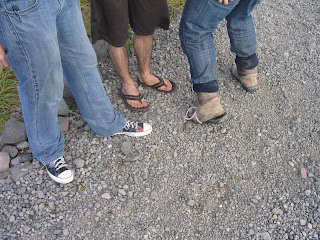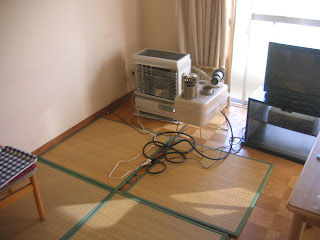
Every year, some prefecture in Japan hosts the Kokutai, a national sports festival that lasts about two weeks and features matches between teams all over Japan in sports ranging from team sports like baseball, basketball, and hockey, to boating sports like sailing and rowing, to martial arts like judo, karate, and kendo.
This year, the Kokutai is being held in Akita, and everywhere you look, you can see Sugichi, the anthropomorphic christmas tree mascot of Akita, holding olympic-looking torches, swinging a baseball bat, wearing a sumo mawashi, or even (frighteningly enough) holding a gun and smiling gleefully.
Needless to say, it's pretty awesome that Akita's hosting the Kokutai while I'm here. Our students have no class during the main week of the festival's matches, and many teachers choose to take some days off too. The best part is, if we use this time to go see some sporting event, it doesn't count against our days of paid vacation. Because of this, and the fact that I would have practically nothing to do here at school, I'm trying to see as many things as possible. Planning is tough though, as there are so many events, and many occur at the same time.
My tentative plan at the moment is as follows:
9/30 - soccer
10/1 - karate
10/2 - sumo
10/3 - kendo
10/4 - soccer
10/5 - rugby
10/6 - baseball
10/7 - judo
It should be fun cheering for Akita, even though it sounds like our baseball team will get crushed in the first round.
And before I leave for the weekend, here's a few more pictures:
 My apartment from the outside.
My apartment from the outside. My school, as seen from the balcony of my apartment (I told you it was close!)
My school, as seen from the balcony of my apartment (I told you it was close!) My living area in my apartment, all fixed up. Lots of Akita maps, and a nice recliner given to me by the principal.
My living area in my apartment, all fixed up. Lots of Akita maps, and a nice recliner given to me by the principal. The largest can of peas at my local supermarket.
The largest can of peas at my local supermarket. "natsu kurimu" = not peanut butter
"natsu kurimu" = not peanut butter









































